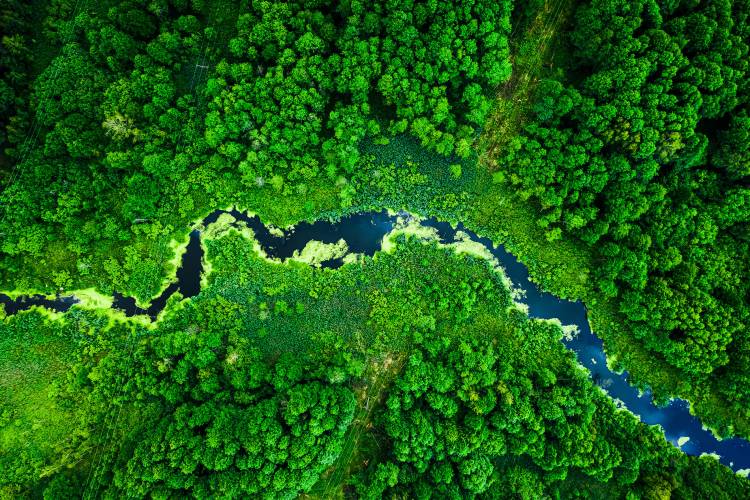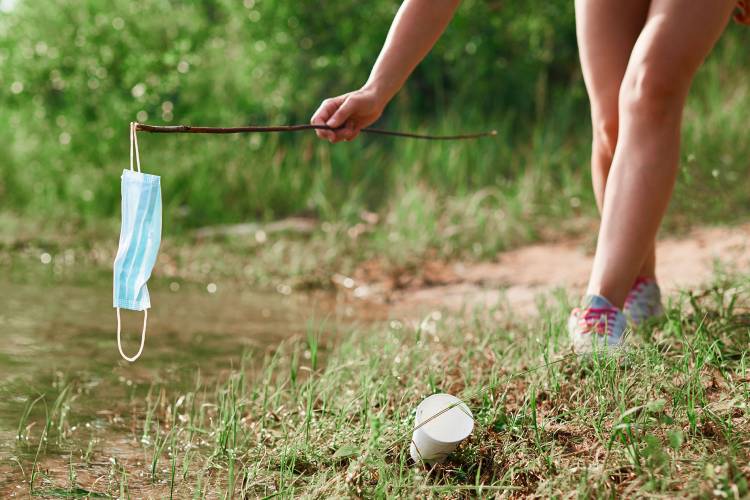Discover the environmental impact of the pandemic
Last year we experienced an unprecedented situation caused by the emergence of COVID-19 which affected different aspects of our lives. Most of the population was forced to remain at home for several months, and this had a huge effect on nature.
IT’S ECO, IT’S LOGICAL
Share

Together with lockdown, all of the actions designed to stop the spread of the virus have had an indirect impact on our environment; some have benefited, but others have been harmed even more. Would you like to discover the progress of the environmental impact of the pandemic? If so, we tell you below.
Pandemic and environment: positive impacts
From March 15th until June 21st, 2020, Spanish citizens were forced to stay at home to curb the effects of COVID-19. In addition to locking down the population, the government also adopted different measures to prevent citizens from other countries entering ours and which benefited nature hugely.
- Reduction of greenhouse gases and improvement in air quality: the measures taken to contain the pandemic throughout the world, the halting of industry and the reduction in travel caused a large decline in gas emissions, such as nitrogen dioxide, and gave cities air purity back. This event was captured by several European Space Agency satellites, where the difference in atmosphere from one year to another can be seen clearly.
- Reduction in noise pollution: during the time that the public spent in lockdown, the noise produced by human activity was also reduced in large cities, and finally reached the recommended volume of decibels recommended by the World Health Organisation.
- Wild animals extended their roaming areas: the strict lockdown endured by most of the population brought with it the opportunity to observe how nature acts when humans aren’t in the way. Images of animals from different species, naturally wild, invading urban environments flooded the press around the world.
- Cleaner water: with the state of alarm coming into force, many countries closed their airports and their ports too, preventing the passage of various types of boats. As a secondary effect of this prevention measure, the seas also oxygenated from all of the pollution they were accustomed to since, in addition to all of the waste thrown into the sea, many boats, especially luxury cruise ships, pollute up to five times more than all of the vehicles that travel around the peninsular. A clear example of how lockdown affected the sea is the city of Venice which, during this period of time, saw the waters of its canals turn completely clear.

Pandemic and environment: negative impacts
The use of plastic and various single-use materials, together with the compulsory use of face masks, has played an extremely important role in the pandemic. And, although their use has helped to curb the spread of the virus, it has turned COVID-19 into a real threat to the environment as well as a threat to public health.
- Environmental pollution: disposable masks, hydro alcoholic gels, face shields or gloves are some elements, mainly comprising plastic, that we have introduced into our daily routine (without counting hospitals where the use is even greater). If pollution from the mass use of plastic was already a serious problem on our planet before the pandemic, the excessive use of products made of this material has exacerbated it. The seas, beaches, mountains and streets have been invaded with masks and gloves.
- Invasion of animals’ habitats: many animals have seen their habitats fill suddenly with items that are harmful to their health and the environment, such as masks. These don’t just take approximately 400 years to decompose, but they can also be a death trap for fauna. In addition to the waste that ends up in the sea and aggravates the problems for sea animals even more, veterinary surgeries are increasingly warning of the fact that they are seeing more birds that have become completely trapped by the elastics of the masks or that have been strangled. For that reason, they strongly advise the public to cut the elastics before throwing them away so they can save lives.

Pandemic and environment: current situation
The current situation in our country is even worse than before the pandemic since, due to the negative effects of COVID-19 that we mentioned earlier, we should add a reduction in the use of public transport, or shared transport, with the corresponding increase in consumption of private vehicles. This has increased the generation of greenhouse gases, such as nitrogen dioxide, which increases the pollution of our ozone layer.
We have all suffered the effects of this pandemic and, although there are things that are out of our hands, we are able to help or harm the environment of our planet. Every gesture counts. Act responsibly!






